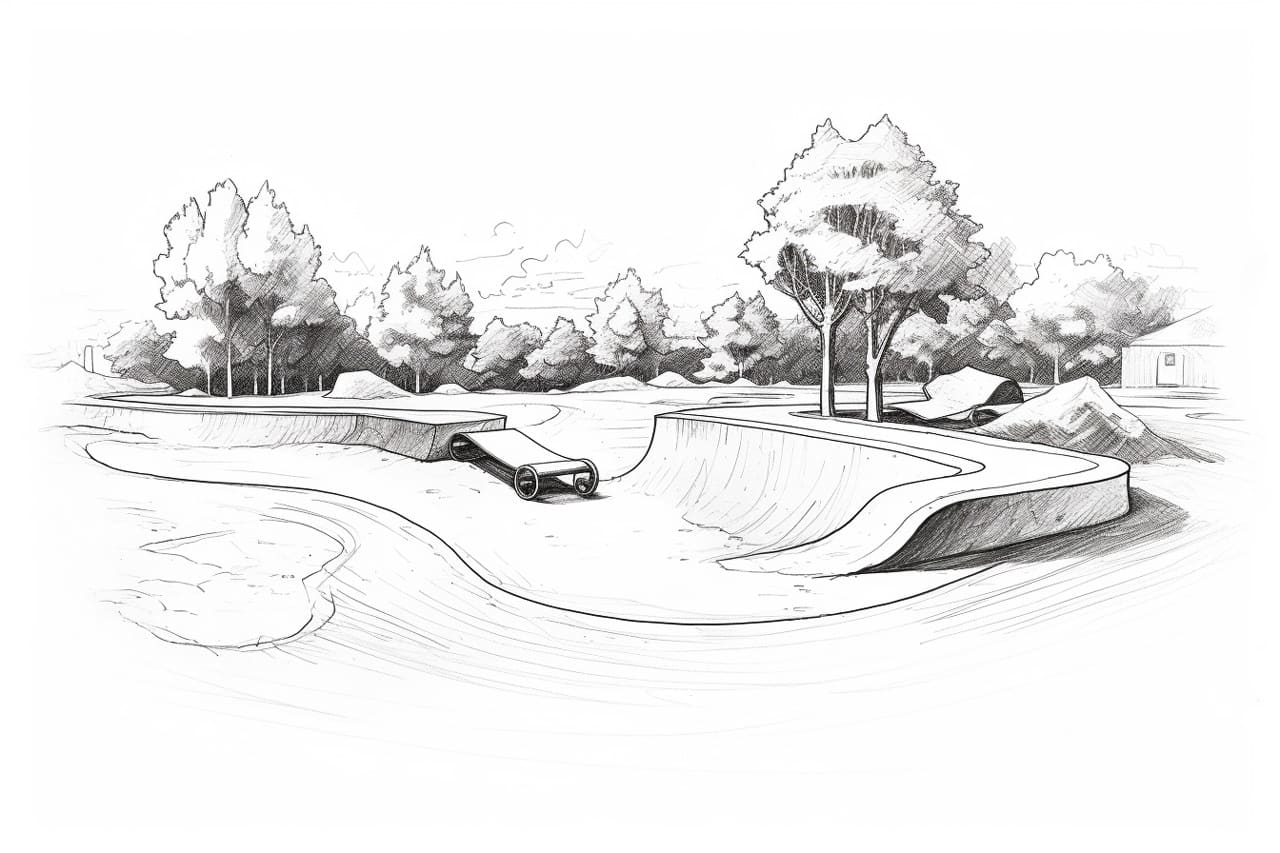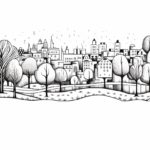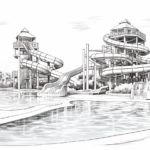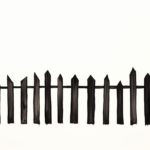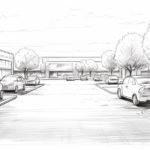Skate parks are not just a playground for skaters, they are a vibrant and dynamic space filled with energy, movement, and creativity. Learning how to draw a skate park allows you to capture the excitement and spirit of this unique environment on paper. From the smooth curves of the ramps to the bold graffiti art decorating the walls, there is no shortage of inspiration to be found in a skate park. This guide will explore the techniques and tips needed to bring a skate park to life on your canvas. So grab your sketchbook, and let’s dive into the world of drawing skate parks!
Materials Required
- Drawing paper
- Pencils (2B, 4B, 6B)
- Eraser
- Blending stumps
- Colored pencils or markers (optional)
Step 1: Sketch the Basic Layout
Start by drawing a horizon line to determine the ground level. Then, sketch the basic shapes of the ramps, rails, and other elements of the skate park. Use simple geometric shapes like rectangles and circles to outline the main features.
Step 2: Add Detail to the Ramps
Now, add more detail to the ramps by drawing in the curves and slopes. Pay attention to the angles and proportions to make sure they look realistic. Add in any platforms or stairs that connect the ramps together.
Step 3: Draw the Rails and Ledges
Next, draw in the rails and ledges that skaters can grind and slide on. These can be straight or curved, depending on the skate park’s design. Make sure to add in any details like bolts or supports to make them look realistic.
Step 4: Add in the Stairs and Platforms
Draw in the stairs and platforms that provide access to the different levels of the skate park. Pay attention to perspective to make sure they look three-dimensional. Add railings or barriers for safety and realism.
Step 5: Include Other Elements
Add in additional elements like benches, trash cans, and signage to make the skate park look more complete. These details will add interest and realism to your drawing.
Step 6: Refine and Add Texture
Go over your drawing and refine any details that need adjusting. Add texture to the ramps and rails to make them more realistic. Use shading to create depth and dimension in your drawing.
Step 7: Final Touches
Add any final touches, such as skaters in action, graffiti on the ramps, or a background landscape, to complete your drawing. Take your time to add small details that will make your skate park drawing stand out.
Step 8: Review and Adjust
Step back and review your drawing to see if any areas need adjusting or additional details. Make necessary changes to ensure your skate park drawing looks complete and well-executed.
Congratulations, you have successfully drawn a detailed skate park scene!
Conclusion
Congratulations on completing your drawing of the skate park! Your attention to detail and use of perspective brings the scene to life. Remember that every drawing, no matter how small, is a stepping stone towards improvement. Keep practicing, experimenting with different techniques, and, most importantly, have fun with your art. You have a lot of talent and potential, so keep pushing yourself; your skills will continue growing. I look forward to seeing more of your artwork in the future. Great job!
Fun Facts About Skate Parks
- The world’s largest skate park is the SMP Skatepark in Shanghai, China, covering an area of over 13,700 square meters.
- Skateboarding was initially known as “sidewalk surfing” and was first popularized in the 1950s.
- The first known purpose-built skate park was Surf City in Tucson, Arizona, which opened in 1965.
- The Tony Hawk Foundation has helped fund over 600 skate park projects across the United States since its inception in 2002.
- Skate parks are not just for skateboarding – they are also popular spots for inline skating, BMX biking, and scootering.
- The design of a skate park can significantly influence the type of tricks and maneuvers that skaters can perform, with features like ramps, rails, and bowls catering to different styles.
- Skate parks provide a safe and designated space for skaters to practice and hone their skills, reducing the need to skate in potentially dangerous urban environments.
- Skate parks can positively impact communities by providing a recreational space for youth, promoting physical activity, and fostering a sense of camaraderie among skaters.
- Some skate parks are designed to be environmentally friendly, incorporating sustainable materials and practices in their construction.
- Skate parks can host various events and competitions, bringing together skaters of all skill levels to showcase their talents and celebrate the sport.
Suggestions for Scenes and Settings for Skate Park Drawings
- A group of skateboarders practicing tricks on a halfpipe at sunset, with long shadows and vibrant colors in the sky.
- A skater performing a high jump off a ramp, capturing the energy and movement in mid-air.
- A close-up of skateboard wheels rolling over various textures on the ground, showcasing the different surfaces of the skate park.
- A skater grinding on a rail with graffiti-covered walls in the background, creating a gritty urban atmosphere.
- A panoramic view of the entire skate park, including ramps, rails, and bowls, with skaters scattered throughout in different poses.
- A skater doing a handstand on his skateboard in the middle of a crowded skate park, emphasizing balance and skill.
- A series of sketches captures a skater’s learning of a new trick, from initial attempts to successful execution.
- A bird’s eye view of the skate park during a busy day, with skaters weaving in and out of each other’s paths.
- A close-up of a skater’s hands adjusting his grip on the skateboard, highlighting the details and textures of the deck.
- A skater resting on the sidelines, watching others skate, and taking in the vibrant energy of the park.

